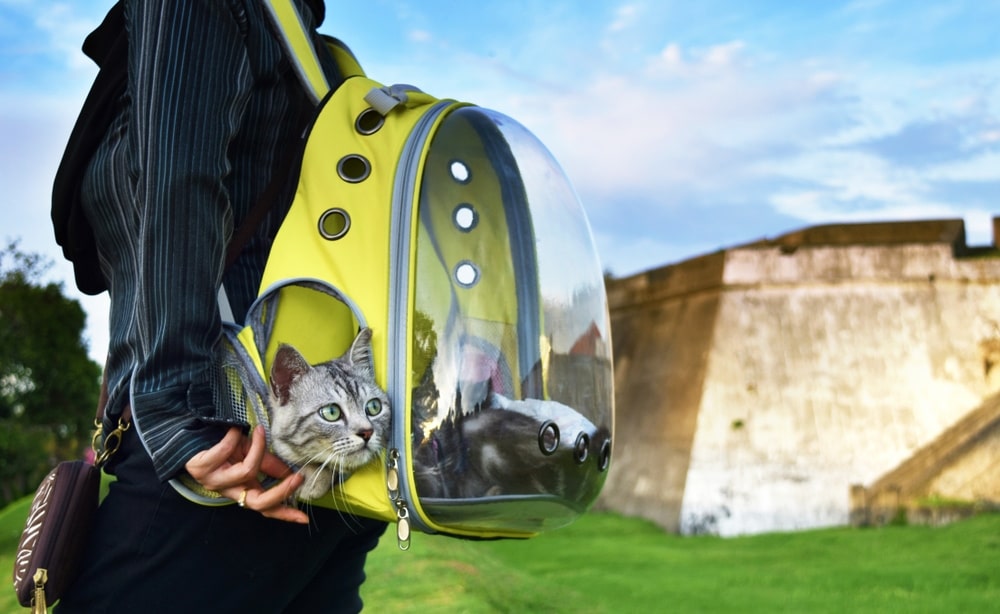Click to Skip Ahead
Holiday Inns are located all around the United States and are designed to accommodate families of all shapes and sizes, including those who like to bring pets along on their travels. Not all Holiday Inns allow pets on their properties, but hundreds of them do, so it shouldn’t be a problem finding a pet-friendly Holiday Inn that will accommodate you and your pet, wherever your destination happens to be.
If you’re interested in Holiday Inn’s pet policies, how to find a pet-friendly location, and what to expect while visiting a hotel with your pet, keep reading!
Holiday Inn Locations That Are Pet Friendly
Holiday Inns are located around the world, and many accept pets to accommodate the growing number of families that like to travel with their beloved cats, dogs, and other small animals. There is no official list of Holiday Inns that are pet friendly, but you can find locations by searching Holiday Inn’s parent company website. Just input your destination, and a list of pet-friendly locations should be generated along with links to the specific hotels so you can learn more about their pet policies and guidelines.
Holiday Inn’s Pet Policies
Holiday Inn strives to maintain a harmonious balance between accommodating people with pets and those who aren’t interested in having anything to do with animals. Therefore, each location has specific pet policies that must be followed by guests during their stay. These policies vary from location to location, so you’ll need to verify them with the specific Holiday Inn that you plan to stay at with your pet before you get there.
Most Holiday Inns that accept pets require an additional deposit that can range from anywhere between about $5 and $50 (or more) a night, which is to help pay for any damage that’s done to the room and/or additional cleaning services that are needed after check-out. Some locations refund all or part of the deposit if no damage is done or additional cleaning needed.
Pet-friendly Holiday Inn locations provide special signs to hang on the door if you leave your pet in your room alone so staff know not to enter the room. This helps keep your pet and humans safe during your stay for optimal peace of mind.

Pet Policy Examples
Researching the specific pet policies at a few Holiday Inn locations will help you understand how varied they can be. Here are the pet policies of three different Holiday Inn locations that you can use for reference when planning for your next vacation or business trip:
Pet Policies for Holiday Inn Express in San Diego, California — La Mesa
- Service animals and pets are allowed.
- The animal weight limit is 90 pounds.
- A $250 deposit is required per stay.
- Unattended pets must be crated in their rooms.
Pet Policies for Holiday Inn Tampa North, Florida
- A maximum of two pets is allowed in each room.
- There’s a $50 fee per pet, per night.
- Pets may stay no longer than four consecutive nights.
- There is no fee for service animals.
Pet Policies for Holiday Inn Express & Suites, Austin Texas
- All pets are welcome.
- There’s a $50 fee per pet, per night.
- No deposit is required.
- Designated walking area located onsite.
Stipulations to Consider
You may encounter location-specific stipulations at the Holiday Inn that you decide to visit.
It’s a good idea to ask the location where you’ll be staying to email you a detailed description of said stipulations. The ones that you might encounter include:
- Outdoor Access for Pets: Most pet-friendly Holiday Inn locations designate specific sidewalks, paths, and locations on their properties where pets are and aren’t allowed, and it’s the responsibility of owners to follow those designations or otherwise risk losing their rooms.
- Leash Rules: Any Holiday Inn that you decide to visit with your dog will require you to keep the animal leashed at all times while outdoors on their property. This is for the safety of everyone and all animals that are sharing the public spaces.
- Room Supervision: Some Holiday Inns allow guests to leave their pets in their rooms while offsite, while others may require that guests stay onsite or take their pets with them while away. It depends on whether the possibility of excessive noise is a concern.

How to Be a Great Pet-Owning Guest During Your Holiday Inn Stay
There are a few things that you can do to make sure you don’t disturb other guests or become troublesome to management during your stay at a Holiday Inn with your pet. First, make sure your pet is housetrained. Dogs should know how to “hold it” until they can get outside for a potty break, and cats should be able and willing to use a litter box even in strange environments. Dogs should also be well-socialized to ensure that they behave in strange public settings.
- Don’t Leave Your Pet Alone for Long: Even if you don’t think that your pet will make much noise while you’re out of the room, you never know what will happen if you aren’t there to keep things under control. Therefore, it’s a good idea to stay with your pet as much as you can. Try to keep outings under about 15 minutes to minimize the risk of your pet disturbing neighboring guests.
- Treat Your Pet for Fleas Beforehand: If the hotel discovers that your pet has left fleas behind, there is a chance that you’ll pay an extra fee for the treatment services that will be necessary before new guests can occupy the space.
- Be Honest: It’s not worth risking your stay at any Holiday Inn by lying about things like your pet’s size or breed. If your pet is larger than the hotel’s policy allows for, don’t try to sneak them in, anyway. You’ll have to take them out for potty breaks, so chances are that you’ll get caught and kicked out of the hotel, scrambling to find other accommodations.

Conclusion
Many Holiday Inns are pet-friendly, but policies vary between locations. Some allow all pets, while others only allow dogs. Some have weight restrictions and some have none. A few properties maintain designated dog parks and walking trails. Many require a deposit, a daily fee, or both for a pet’s stay. No matter the case, it is important to verify the pet policies before showing up to stay at any location with a pet of any kind.
Featured Image Credit: Michael Pettigrew, Shutterstock










